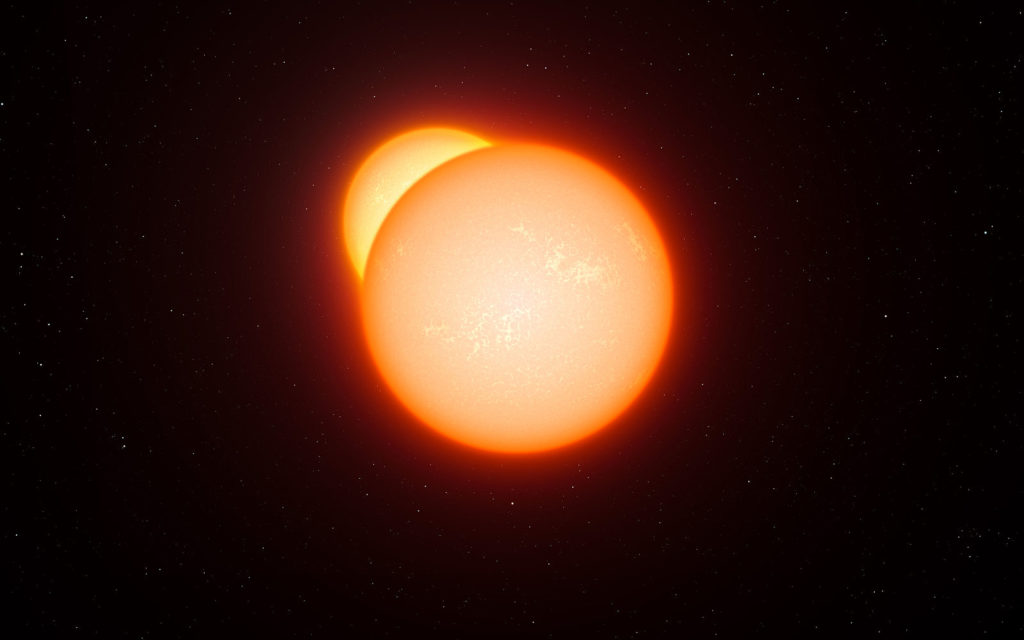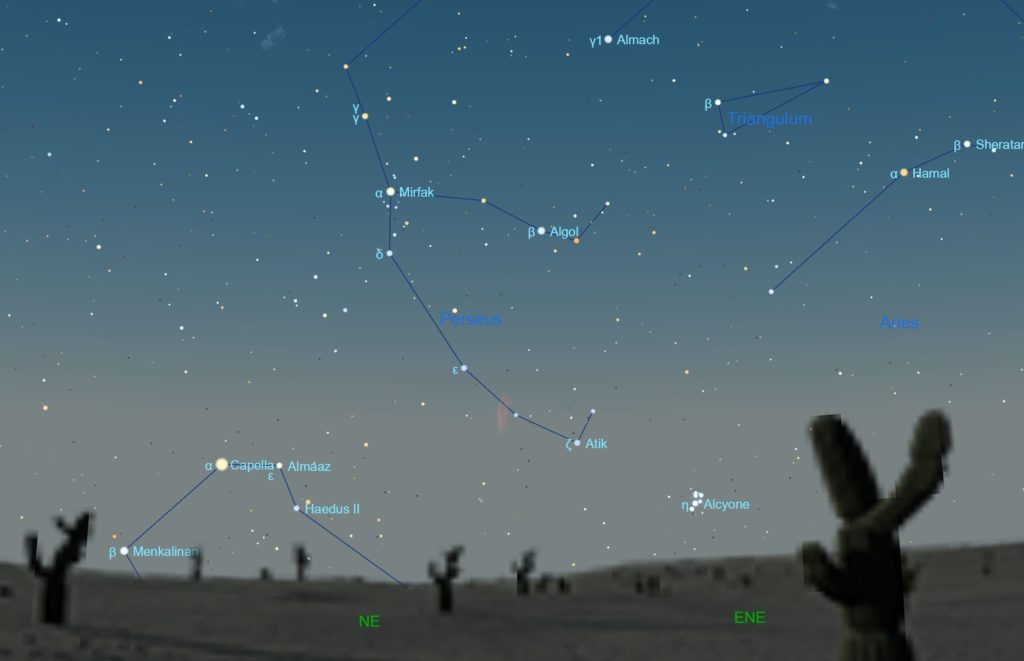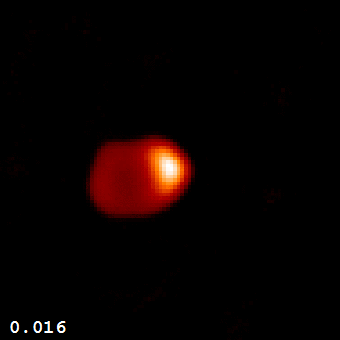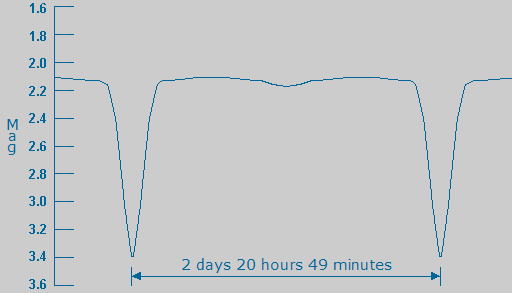
Algol, the second brightest star in the northern constellation Perseus, is the finest example of an eclipsing variable star in the entire sky. In this compact stellar system, two stars revolve around their common center of mass in a rhythmic and precise gravitational dance, and the resulting eclipse causes the brightness of the star to vary like clockwork to a degree that’s easily perceptible to the human eye. And you can watch it from your backyard. No telescope required.
Algol, also cataloged as Beta Persei, lies some 93 light years from Earth. Like many stars, it’s a binary: a hot blue-white main sequence star about three times the diameter of our Sun, and a cooler yellow-orange star that’s started to grow long in the tooth. The two are quite close to each other, only 1/20 of the separation of the Earth and Sun, so they revolve quickly, once every 2.867 days to be precise. Such closely-spaced binary stars are quite common.

But unlike many binary stars, the orbital plane of Algol is aligned to our point of view, which means the fainter cool star partly blocks the brighter hot star once per revolution. That causes total brightness of the two stars to appear to drop suddenly by roughly 70%. And when the brighter star blocks the cool star, the total brightness drops again, but by a much smaller amount over the same period.
Ancient stargazers were unnerved by Algol, perhaps by its rhythmic changes in brightness. Its name comes from the Arabic al Ghul, “The Demon”, and in the Greek myths, Algol represents the head of Medusa, the snake-haired gorgon, the head of which Perseus used to turn the sea monster Cetus to stone. The ancients also considered Algol to represent misfortune. The epic poet Homer wrote of Algol in the Iliad: “...the Gorgon’s head, a ghastly sight, deformed and dreadful, and a sight of woe“.
But the ancients gave the star a bad rap. With the dawn of modern science, astronomers made more precise measurements of Algol’s brightness variations in the 17th and 18th centuries. And some astronomers speculated the variability was caused by an eclipse, possibly caused by a large planet going around the star. Finally, with the dawn of spectroscopy in the late 19th century, astronomers were able to confirm the presence of two stars that revolve around each other, one fainter than the other. In time, a much fainter third star was also detected in the system; this star revolves around the two brighter stars every 1.85 years.
From our point of view, all three stars are too close to resolve directly in a telescope. But clever schemes to image the star using interferometric techniques have resolved the two main stars and show their revolution (see below).

You can see Algol in action for yourself. It’s easily visible in Perseus just east of Mirfak, the brightest star in the constellation. When not in eclipse, the star has a brightness of magnitude 2.2. At peak eclipse, when the fainter component partially eclipses the brighter component, the brightness falls noticeably to magnitude 3.3. The eclipse happens over about ten hours from maximum to minimum to maximum again, so if the timing is right you can see the brightness fall and rise during a single night, and an appreciable change in brightness in just a couple of hours. To follow the progress of the eclipse, you can compare the brightness of the Algol to nearby Epsilon (ε) Persei (magnitude 2.9) and Gamma (γ) Andromedae (Almaak), which is magnitude 2.1. Again, no telescope is required.
As mentioned, the eclipses of Algol arrive every 2.867 days. To find out exactly when they occur in your time zone, this page has a useful predictor tool for Algol and several other bright variable stars.
The measure of the brightness (or magnitude) of a variable star like Algol gives what’s called a light curve. An eclipsing variable gives the distinctive light curve shown below. The deep dip in brightness is the time when the faint star blocks the bright star. When the bright star blocks the faint star, you see a shallower dip in brightness.

Eclipsing binary stars like Algol are more than a passing curiosity. They also enable direct determination of stellar brightness and mass that help astronomers refine theories and mathematical models of how stars work. It’s another example of how nature is sometimes generous: we can measure the true size and brightness of a star many trillions of miles away simply by careful observation and deduction, and infer the properties of thousands of other stars with these measurements. Science is a beautiful thing.
Share This: